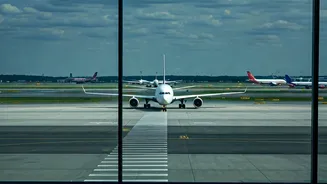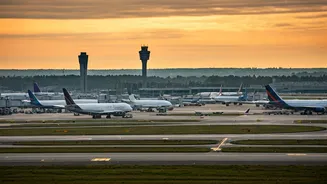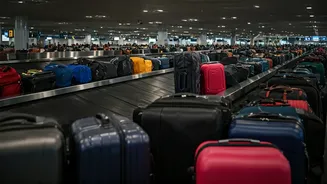Massive Flight Disruptions
The U.S. aviation system was severely impacted by a crisis that unfolded amidst a government shutdown. The immediate fallout was the grounding of approximately
2,000 flights, causing major inconvenience for travelers. Several major airports found themselves overwhelmed, as around 40 airports experienced significant disruptions. The knock-on effects were substantial, with thousands of passengers directly impacted by the cancellations and delays. This situation raised immediate concerns about the efficiency and reliability of air travel during the shutdown.
Shutdown's Connection
The flight disruptions were directly linked to the government shutdown, which created operational challenges across various sectors. The shutdown led to staffing shortages, especially among air traffic controllers and security personnel, who are crucial to the smooth functioning of airports. This decrease in available personnel was a crucial factor that was responsible for the increased flight delays and cancellations. As the shutdown persisted, concerns grew about the possibility of even more extensive cutbacks, potentially affecting up to 20% of flights.
Passenger Woes Multiply
The immediate impact of the aviation crisis was felt most acutely by passengers. With flights grounded, many travelers found themselves stranded at airports or facing significant delays. The disruption created a logistical nightmare for those with connecting flights, leading to missed connections and altered travel plans. The government shutdown added a layer of uncertainty for air travelers, with many uncertain of when normal operations would resume and their travel plans would go back to normal. The widespread disruptions highlighted the vulnerability of the aviation system to external factors like government shutdowns.
Industry-Wide Impact
The effects of the aviation crisis stretched beyond just individual passengers. The widespread flight cancellations had a significant impact on the airline industry as a whole. Airlines faced increased operational costs due to rebooking passengers, providing accommodations, and dealing with other related expenses. The crisis also affected the air cargo industry, as the delays and disruptions affected the movement of goods. The situation brought into question the aviation industry's ability to maintain schedules and provided a glimpse of the possible effects of long-term staffing shortages and logistical bottlenecks.
Possible Future Outcomes
With the government shutdown ongoing, many industry experts started discussing potential future outcomes. The possibility of the situation getting worse, with more flight cuts being implemented, was a concern. The shutdown also raised questions about the long-term impact on the public's confidence in air travel, which could lead to shifts in travel patterns. The aviation crisis became a focal point in discussions about the need for robust contingency plans to manage potential crises within the transportation sector.














